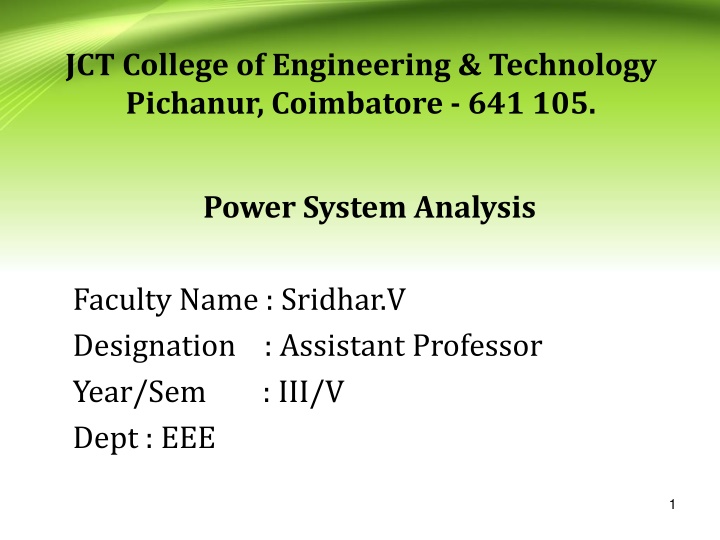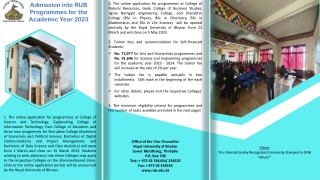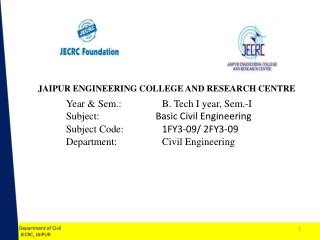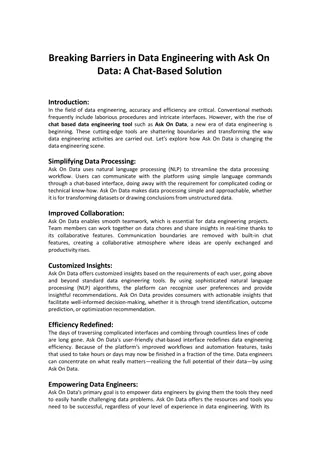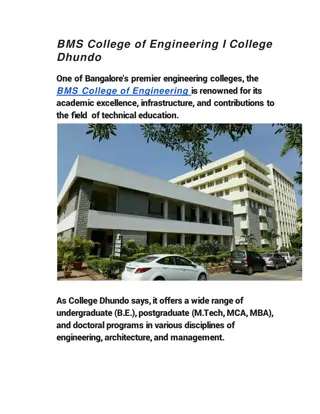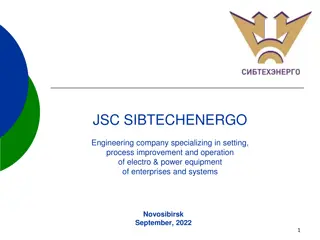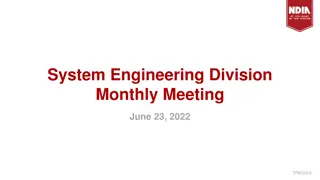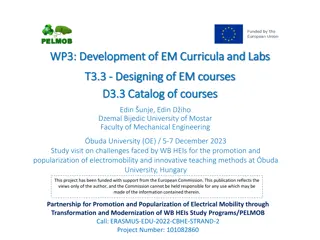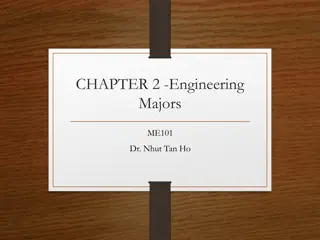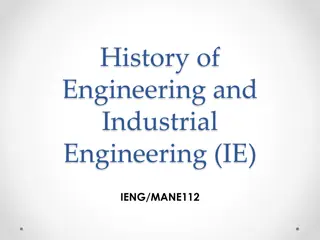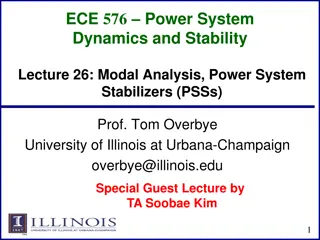Power System Analysis at JCT College of Engineering & Technology
Power flow analysis, bus classification, and iterative methods in the context of Power System Analysis taught at JCT College of Engineering & Technology. Dive into topics like Gauss-Seidal method, Newton-Raphson method, and more to understand the complexities of power systems.
Download Presentation

Please find below an Image/Link to download the presentation.
The content on the website is provided AS IS for your information and personal use only. It may not be sold, licensed, or shared on other websites without obtaining consent from the author.If you encounter any issues during the download, it is possible that the publisher has removed the file from their server.
You are allowed to download the files provided on this website for personal or commercial use, subject to the condition that they are used lawfully. All files are the property of their respective owners.
The content on the website is provided AS IS for your information and personal use only. It may not be sold, licensed, or shared on other websites without obtaining consent from the author.
E N D
Presentation Transcript
JCT College of Engineering & Technology Pichanur, Coimbatore - 641 105. Power System Analysis Faculty Name : Sridhar.V Designation : Assistant Professor Year/Sem : III/V Dept : EEE 1
UNIT II POWER FLOW ANALYSIS 2
BUS CLASSIFICATION 1.Slack bus or Reference bus or Swing bus: |V| and are specified. P and Q are un specified, and to be calculated. 2.Generator bus or PV bus or Voltage controlled bus: P and |V| are specified. Q and are un specified, and to be calculated 3.Load bus or PQ bus: P and Q are specified. |V| and are un specified, and to be calculated 3
ITERATIVE METHOD n I Y V = = = p pq q 1 q P = * S jQ V I p p p P p P jQ n p p = Y V pq q * V = 1 q P The above Load flow equations are non linear and can be solved by following iterative methods. 1.Gauss seidal method 2.Newton Raphson method 3.Fast Decoupled method 4
GAUSS SEIDAL METHOD For load bus calculate |V| and from Vpk+1equation = P jQ 1 p 1 n + + p p 1 1 k k k V pq q Y V pq q Y V p * k ( ) Y V = q p = + 1 1 q pp P For generator bus calculate Q from QPK+1equation 1 p n + + 1*Im ( = + 1 * 1 k k k k ) Q V Y V Y V p P pq q pq q = q p = 1 q 5
Check Qp,calk+1with the limits of Qp If Qp,calk+1lies within the limits bus p remains as PV bus otherwise it will change to load bus Calculate for PV bus from Vpk+1equation Acceleration factor can be used for faster convergence Calculate change in bus-p voltage + + = 1 1 k k k V V V p p p If | Vmax|< , find slack bus power otherwise increase the iteration count (k) Slack bus power= G S S L 6
NEWTON RAPHSON METHOD n = + P Q V V Y i i i j ij ij i j = 1 j n = + cos( ) P V V Y i i j ij ij i j = 1 j n = + sin( ) Q V V Y i i j ij ij i j = 1 j = = = J J J J P Q 1 2 V 3 4 k sch k P Q P Q P i i i k sch k Q i i i 7
Calculate |V| and from the following equation + = + 1 k k k i i + = + 1 k k k V V V i i i k P i If k Q i stop the iteration otherwise increase the iteration count (k) 8
FAST DECOUPLED METHOD J2& J3of Jacobian matrix are zero P Q = 0 J J 1 0 V 4 P = = P J 1 Q V = = Q J V V 4 P V Q V = ' B i = '' B V i P V 1 = ' B Q V 1 = '' V B 9
+ = + 1 k k k i i + = + 1 k k k V V V i i i This method requires more iterations than NR method but less time per iteration It is useful for in contingency analysis 10
COMPARISION BETWEEN ITERATIVE METHODS Gauss Seidal Method 1. Computer memory requirement is less. 2. Computation time per iteration is less. 3. It requires less number of arithmetic operations to complete an iteration and ease in programming. 4. No. of iterations are more for convergence and rate of convergence is slow (linear convergence characteristic. 5. No. of iterations increases with the increase of no. of buses. 11
NEWTON RAPHSON METHOD Superior convergence because of quadratic convergence. It has an 1:8 iteration ratio compared to GS method. More accurate. Smaller no. of iterations and used for large size systems. It is faster and no. of iterations is independent of the no. of buses. Technique is difficult and calculations involved in each iteration are more and thus computation time per iteration is large. Computer memory requirement is large, as the elements of jacobian matrix are to be computed in each iteration. Programming logic is more complex. 12
FAST DECOUPLED METHOD It is simple and computationally efficient. Storage of jacobian matrix elements are60% of NR method computation time per iteration is less. Convergence is geometric,2 to 5 iterations required for accurate solutions Speed for iterations is 5 times that of NR method and 2-3 times of GS method 13
